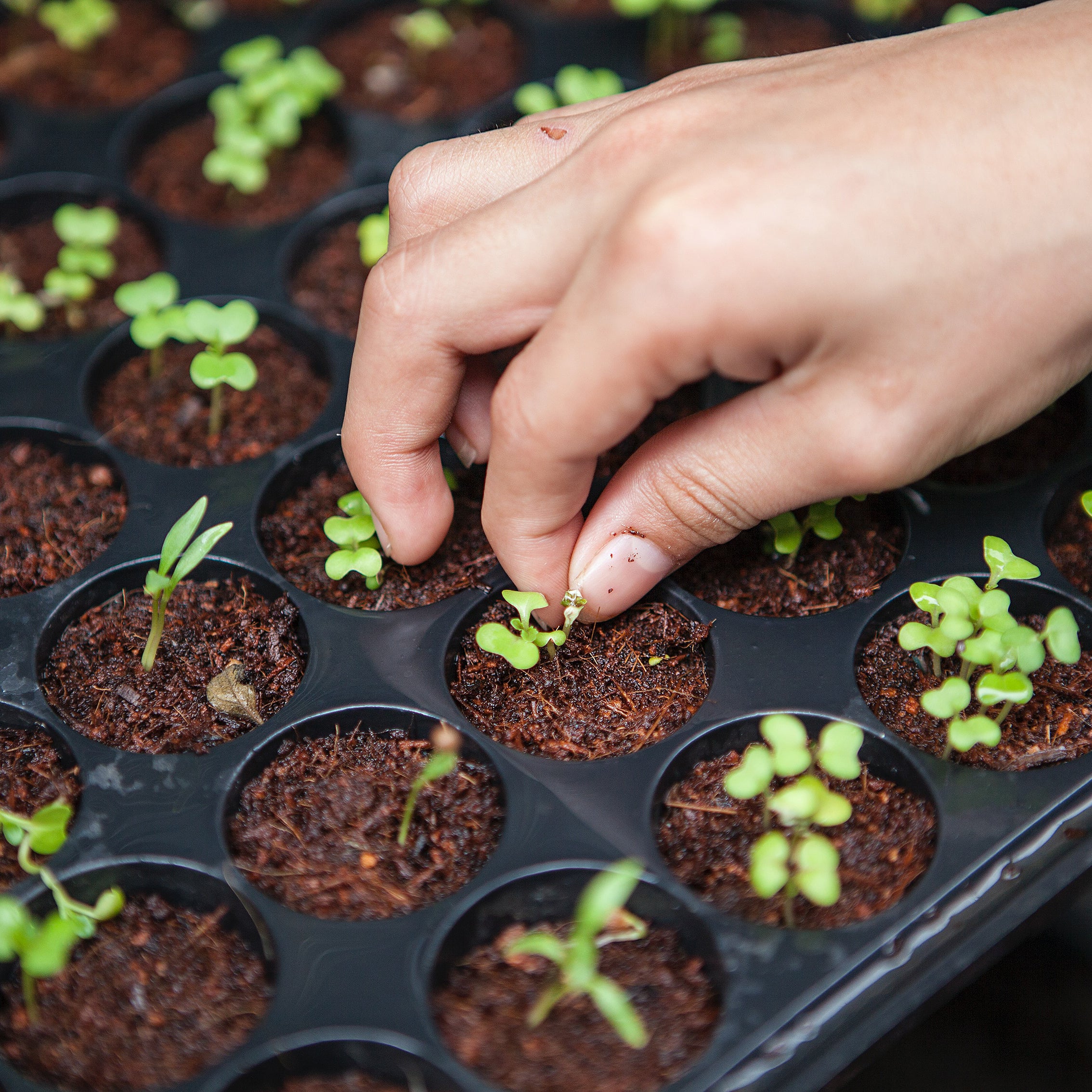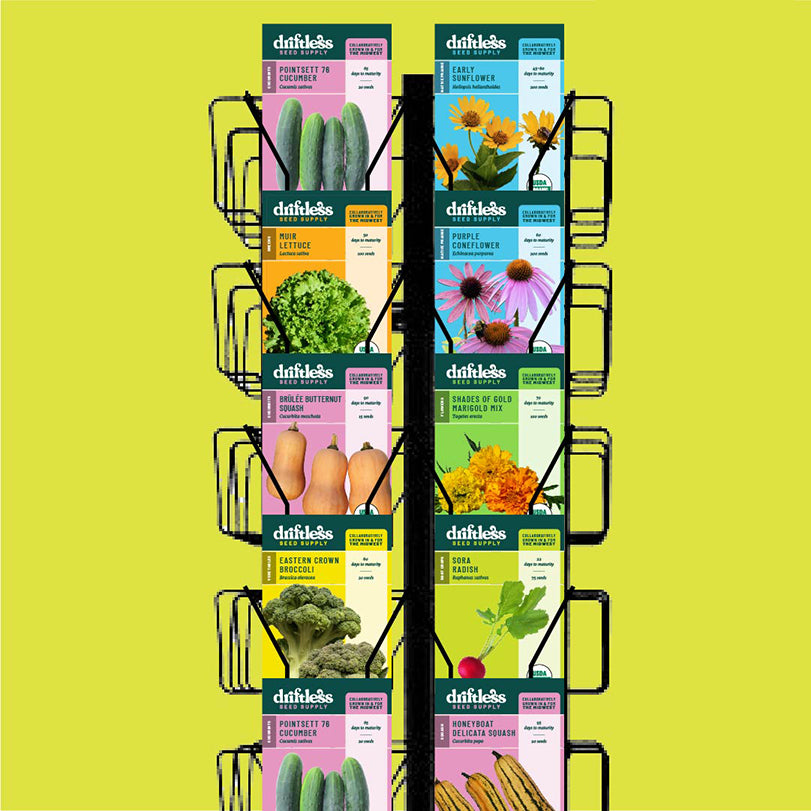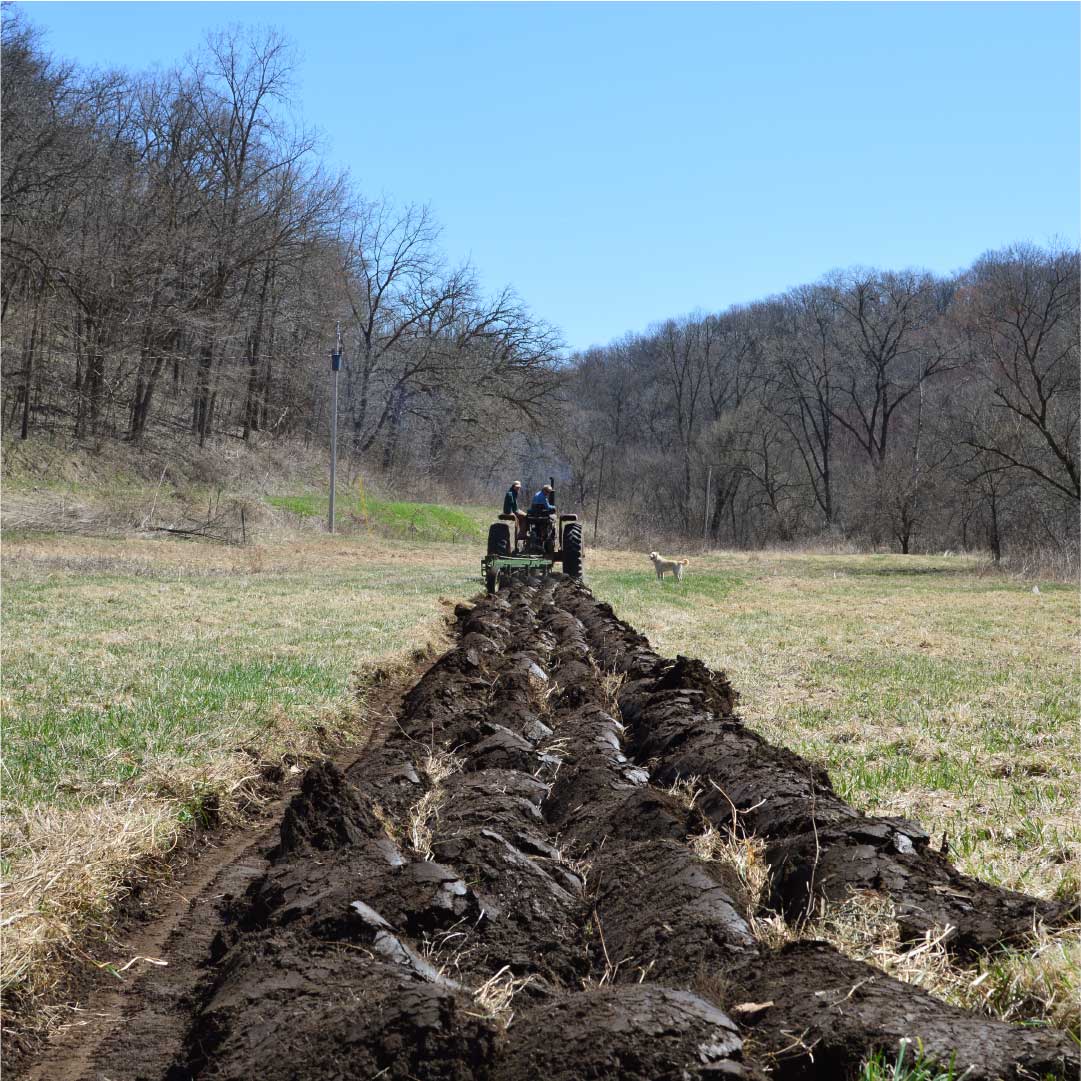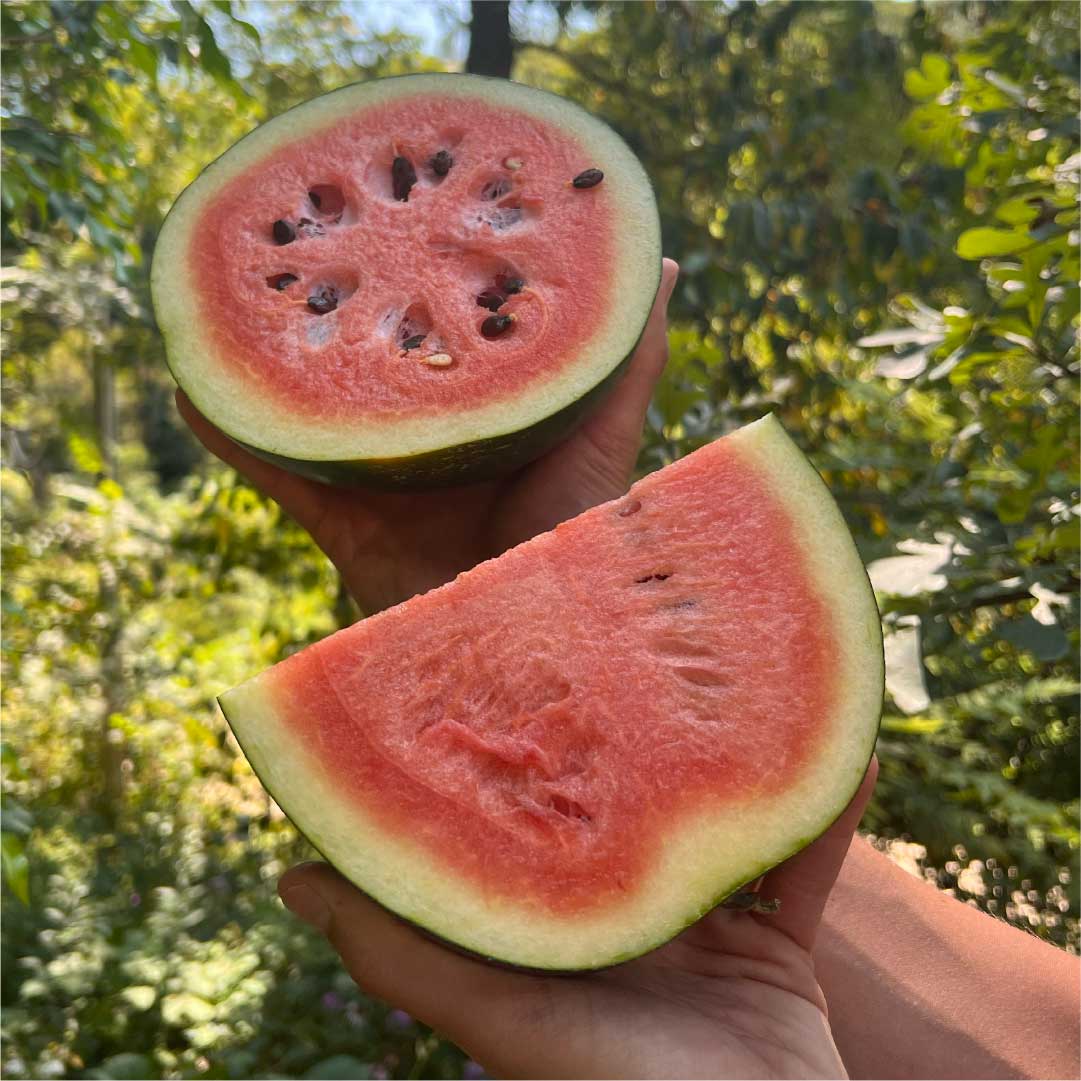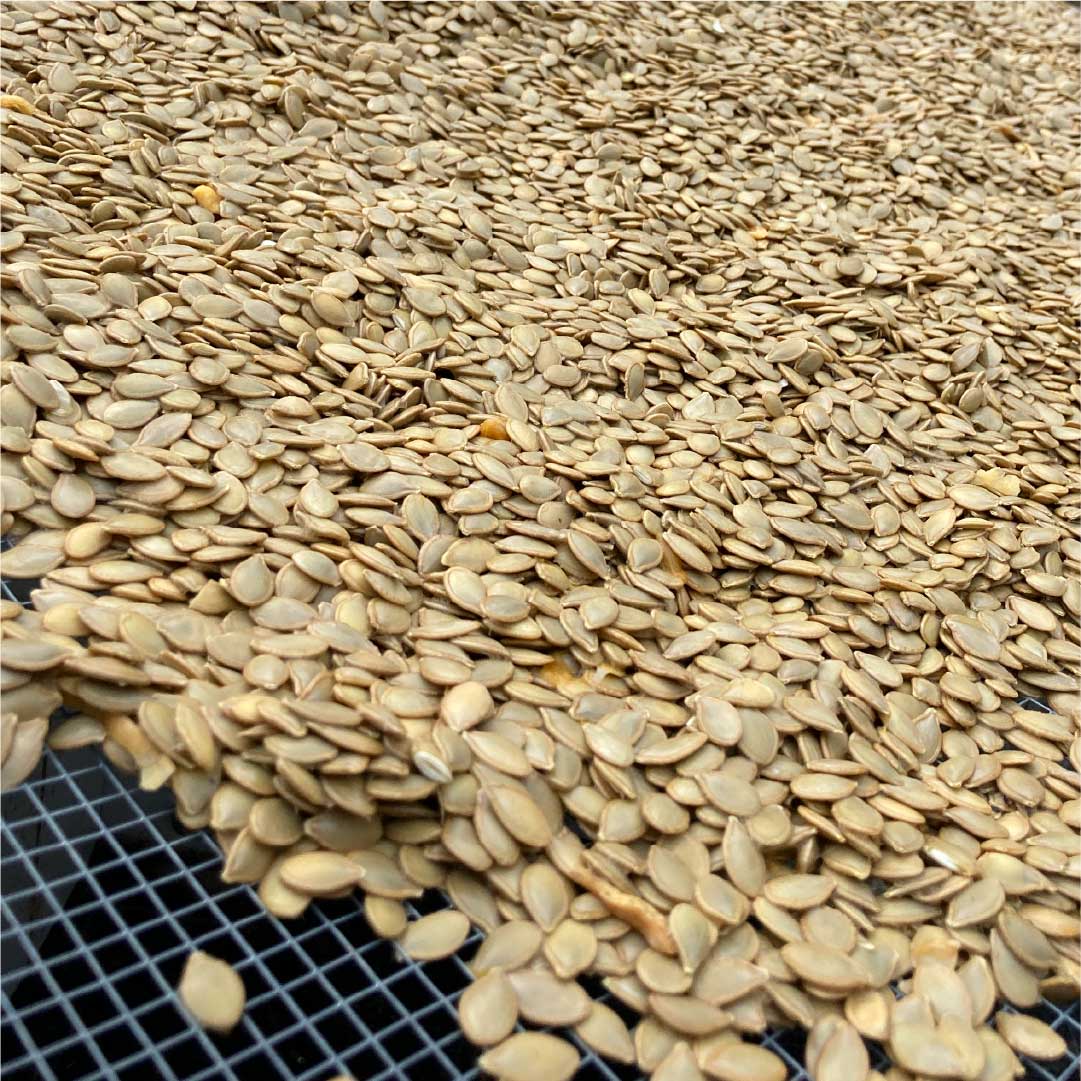
Driftless Seed Supply Grower Resources
Kale
Introduction to Kale
Historical and Cultural Significance
- Kale (Brassica oleracea): A member of the cabbage family, kale has been cultivated for centuries for its nutritious leaves.
- Varieties: Includes curly kale, dinosaur (lacinato) kale, and Russian kale, each with unique textures and flavors.
Botanical Description
- Growth Habit: Kale is a hardy, leafy green that can grow up to two feet tall.
- Leaf Description: Leaves can be green to purple, and range from smooth to curly.
Site Selection and Soil Preparation
Location and Sunlight
- Choose a location with full sun to partial shade.
- Kale thrives in cool temperatures and can tolerate frost.
Soil Requirements
- Prefers well-drained, loamy soil.
- Ideal soil pH: 6.0–7.5.
Soil Preparation
- Enrich soil with organic matter like compost.
- Ensure adequate drainage to prevent root diseases.
Planting
Variety Selection
- Choose varieties suited for the Midwest climate.
- Consider disease resistance and length of growing season.
Sowing
- Direct sow in early spring or late summer for fall harvest.
- Plant seeds 1/4 to 1/2 inch deep.
Planting Time
- For spring crops, plant 3-5 weeks before the last frost. Use transplants started indoors for earlier harvests.
- For fall crops, plant 6-8 weeks before the first frost.
Irrigation
Water Requirements
- Provide consistent moisture, especially during dry spells.
- Mulch to retain soil moisture and regulate temperature.
Nutrient Management
Fertilization
Fertilization recommendations for kale, particularly regarding Nitrogen (N), Phosphorus (P), and Potassium (K), are crucial for optimal growth and yield. However, it's important to note that these recommendations can vary based on soil type, previous crop history, and specific regional conditions. Here are general NPK guidelines for kale, which should be adjusted based on soil test results:
Nitrogen (N):
- Kale, being a leafy green vegetable, has high nitrogen requirements for lush leaf growth.
- A general recommendation for kale is to apply 100 to 130 pounds of nitrogen per acre during the growing season.
- This can be split into multiple applications: one-third at planting and the rest side-dressed in increments during the growing season, especially after heavy harvests.
Phosphorus (P):
Phosphorus is essential for root development and overall plant health.
The application rate for phosphorus is typically around 50 to 100 pounds per acre.
Exact amounts depend on soil test results, as soils with low phosphorus levels will require higher application rates.
- Potassium (K):
- Potassium is crucial for disease resistance and overall vigor of the plant.
- Application rates generally range from 100 to 150 pounds of K2O (potassium oxide) per acre.
- As with phosphorus, soil test results are important for determining the precise requirement.
Additional Considerations:
- Soil Testing: Conduct a comprehensive soil test to determine the existing nutrient levels and pH of your soil. This will allow you to customize your fertilizer application to the specific needs of your soil.
- Organic Matter: Incorporating organic matter, such as compost or well-rotted manure, can improve soil fertility and structure, indirectly influencing the need for synthetic fertilizers.
- Fertilizer Types: Use a balanced fertilizer that contains all three primary nutrients (NPK), but adjust the formula based on soil test results and the growth stage of the kale. For instance, a higher nitrogen content may be beneficial during the leaf development stages.
Remember, these are general guidelines and should be adjusted according to your specific soil conditions and the results of a soil test. Over-fertilization can be as detrimental as under-fertilization, so precise application based on soil conditions and plant needs is key.
Pest and Disease Management
Common Pests
- Cabbage Loopers: Control with Bacillus thuringiensis (Bt).
- Aphids: Manage with insecticidal soap or neem oil.
Common Diseases
- Downy Mildew: Prevent with proper spacing and air circulation.
- Black Rot: Use disease-resistant varieties and practice crop rotation.
Harvesting and Post-Harvest
Harvesting Technique
- Harvest outer leaves first, allowing the center to continue growing.
- Young leaves are tender; mature leaves are more flavorful.
Post-Harvest Handling
- Handle leaves gently to avoid bruising.
- Cool quickly after harvest to retain freshness.
Storage
- Store in a cool, humid environment.
- Kale can be stored for a couple of weeks under proper conditions.
Varietal Selection for the Midwest
Criteria
- Winter Hardiness: Some varieties are more frost-tolerant.
- Disease Resistance: Important for reducing chemical inputs.
- Growth Rate: Fast-growing varieties are suitable for short seasons.

